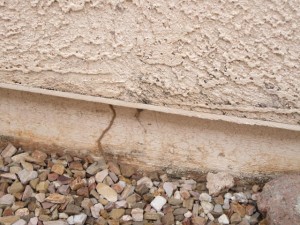Appraisals?
Thursday, November 12th, 2015 The purpose of an appraisal is to protect the investment of the lender’s investors. Actually the lender bundles the loans and sells them on the secondary money market and often they are resold which is why the buyer must purchase an Alta Lender’s policy which assures that the lender is always in first lien holder position. This is why you may purchase a property and the check for the loan is made out to xyz company; eight years later, you receive notice it is to be made out to 123 company and then even later, you write your check to abc company. The mortgage notes have been sold. But I digress.
The purpose of an appraisal is to protect the investment of the lender’s investors. Actually the lender bundles the loans and sells them on the secondary money market and often they are resold which is why the buyer must purchase an Alta Lender’s policy which assures that the lender is always in first lien holder position. This is why you may purchase a property and the check for the loan is made out to xyz company; eight years later, you receive notice it is to be made out to 123 company and then even later, you write your check to abc company. The mortgage notes have been sold. But I digress.
If you have a loan on the property, usually you must have an appraisal. The appraisal is nothing more than an opinion of value. Hopefully that is what your Realtor® has provided you; an opinion of value substantiated by homes of similar age, quality, size and amenities within a reasonable range. The Realtor® is very aware of the fact the property has to appraise. It does no one any good to put a high price on a property, receive a contract for that high price, and then have the property not appraise.
So what happens then? One of three things. Let’s say the property is priced at $275,000. The appraisal comes in at $260,000. The buyer is putting 10% down or $27,500 and carrying a loan for $247,500. Scenario One: The buyer can come in with the additional $15,000, the difference between the $275,000 and the $260,000 and put $42,500 down. But why would a buyer pay $15,000 more for a property than it is worth?
Scenario Two: The seller can lower the price to $260,000 on the basis that the property, according to the appraiser, is not worth $275,000.
Or Scenario Three: The seller and the buyer can meet someplace in the middle and each give up something, the seller can come down $7500 and the buyer can put down an additional $7500. It’s a re negotiation.
Or the seller’s agent can “fight the appraisal” but will generally loose, especially if it is a VA appraisal.
I had a property which sold immediately for $162,000 with a VA loan. The appraisal came in at $156,000. The seller went down $2,000, the buyer came up $2,000 but there was no meeting of the minds. We cancelled the contract, and put the property back on the market but indicated we would not accept VA financing. The VA appraisal stays with the property for six months and I did not want to constrain my seller to the $156,000 appraisal.
Within 48 hour, I had another contract, also for $162,000 but with a conventional loan. The appraisal was done within a week and a half of the first appraisal, and came in at, you guessed it, $162,000. And ironically, that same first buyer came back with another back up offer but of course the second buyer closed on the property within three weeks.
The lesson to buyers is simple. If you have a property you want, be prepared if the appraisal comes in low. Your agent should give you comps to support the price you are offering. Your agent may also know how other agents price: some price high, some price on target, and some give you about 3% to negotiate – often to account for the 3% concessions buyers often request.
The lesson to sellers is equally as simple. Your agent should price the property with supporting comps in a realistic range based on properties in the neighborhood of like kind which have sold. These are the same comps the appraiser will be using. Don’t fall for the old argument, price high, you can always come down. Generally that is a recipe for not selling your home, or a series of price reductions which will net you less than the price your agent originally suggested. Remember, the property has to appraise!







